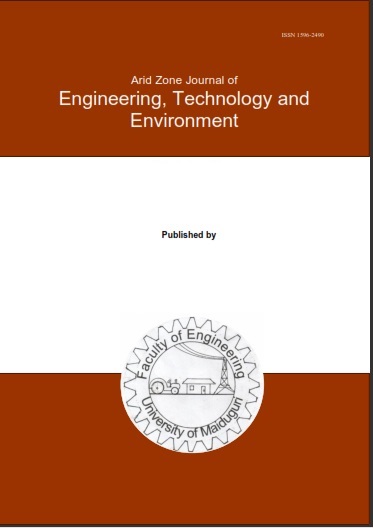Abstract
This study investigated thermal death time (D – value) of Bacillus cereus in acha starch flour, with the aim of providing thermo-bacteriological data that would enhance the safety of acha starch flour. The data would therefore serve as a guide to potential food processors, engineers and scientists thereby promoting the starch usage in food development and formulation beyond its present status. Acha starch was prepared, stored under hygienic conditions and sterilized in an autoclave prior to its thermal treatments. The sample water activity (aw) was then adjusted, and the value confirmed via the aw meter. Design Expert 13 for window was used for the experimental lay-out, comprising three inactivation temperatures and aw values with all experiments conducted in triplicate. The Bacillus cereus thermal destruction characteristics were obtained by plotting number of survivor (CFU/g) against time and corresponding D-value was determined. The D-values obtained were analyzed descriptively and inferentially using Turkey’s posthoc test (Design-Expert 7.00) for Window and fitted into a linear equation representing the dependent and independent variables. The D-value ranged from 20.4 to 12 min. as water activity and destruction temperature changed from 0.55 and 92.1 °C to 0.65 and 80 °C, respectively. The interactive effects of water activity and destruction temperature on natural logarithm of D-value of Bacillus cereus in acha starch flour was linear. The maximum D-value was observed at 80 °C temperature when the water activity was 0.55. This study, therefore, provides valuable thermo-bacteriological data that could be employed as a guide to potential food processors, scientists and engineers in order to improve consumption safety of the product.

This work is licensed under a Creative Commons Attribution-NonCommercial-NoDerivatives 4.0 International License.
Copyright (c) 2025 ARID ZONE JOURNAL OF ENGINEERING, TECHNOLOGY AND ENVIRONMENT

